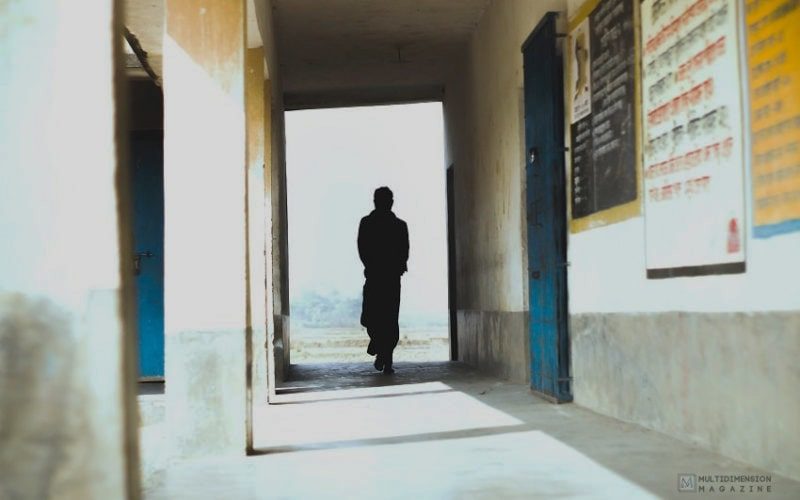Written by : Dr. Anup Shekhar Chakraborty
Photo : Shutterstock.com
The Backdrop
Traditionally the Chakma occupy the South-West and the western belts of the territory between Mizoram and the Chittagong Hill Tracts (CHT) now in Bangladesh and Tripura. The Chakma tribes speak a language heavily influenced by the Eastern Indo-Aryan language group; it is closely related to the Bengali language. They speak different dialects, and their connection with the Zo/Mizo is contested. Recent linguists’ observations have found that the modern Chakma language known as Changma Vaj or Changma Kodha (and a script ‘Ojhopath’) is a part of the South-eastern Bengali stem, which is part of Eastern Indo-Aryan languages. The Chakma aspire to recognise the Chakma language in the 8th Schedule of the Indian Constitution [1]
The ‘southern’ relations and the ‘northern’ tribes have always been laced with prejudice and stereotypes. The attitude of the north in the pre-statehood times towards the three prominent southern tribes, the Lakher (Mara), the Pawi (Lai) and the Chakma, was that of selective targeting. For instance, during the Mizo National Front (MNF) movement, the Lakher (Mara) and the Chakma were targeted as ‘Others’ for failing to respond to the call of the MNF positively. The inability of these two groups to affiliate themselves linguistically and ideologically with the several initiatives of the MNF, such as the reunification of the Zo hnahthlak, secession from the Union of India, fuelled the feeling of otherness. Throughout the MNF’s secessionist movement, the Chakma were targeted as foreigners. For instance, in 1972, when Mizoram became a Union Territory (UT), Laldenga gave a call for abolition of the Autonomous status granted to the Chakma. Laldenga at one time even mentioned that ‘it is totally wrong to grant constitutional autonomy to immigrants…Nowhere in the world are immigrants granted autonomy’. Excepting the Congress , the different political parties and students’ body from the northern belt toed the lines of Laldenga. Interestingly the Pawi (Lai) were spared the harsh treatment for the simple fact that they were linguistically affiliated to the MNF movement and also because Laldenga belonged to this particular group. So their claim to autonomy was justified and authentic.[5]
The South continues to be at the receiving end. The grant of Autonomous Councils to the tribes in the south continues to generate much contentions and restlessness among the northerners [6]. Here it is important to focus on the geographies of identity and ‘geographies of anger’[7] and ethnic consciousness rooted in the sense of relative deprivation,[8] internal colonisation and anti-outsider psychology [9] in order to analyse the north-south divide in Mizoram. The uneven development pace across Mizoram and the slow pace of development in southern Mizoram evokes a strong sense of disgruntledness among the Southern tribes. The southerners at large feel left out and at the receiving end ‘tucked off’ conveniently in their Autonomous District Councils (ADCs). The Northerners, in response, feel that the ethnic cocooning of the Southerners in their ADCs is a reason sufficient to keep them out of developmental initiatives or developmental drives in the state. The ‘North-South divide’ thus very well sums up and accentuate the ‘geographies of anger’ as eloquently outlined by Arjun Appadurai in ‘Fear of Small Numbers: An Essay on the Geography of Anger’ (2006).
The Census of India 2001 found the Chakma community to be the “most illiterate” community in Mizoram, a state having the second-highest literacy rate in India [10]. The discussion highlights the exclusivist tendencies underlying Mizoram’s educational policies and the community-based activism to overcome the exclusion in education. A conscious attempt which harps strongly on maintaining and sustaining a ‘knowledge system’ that is on the one hand ‘pro- Zo/Mizo’, and excludes all others who do not share the common knowledge of Mizo; and on the other compels the marginal tribes to assimilate themselves into the more extensive mould of the generic identity ‘Mizo’.
Though officially treated as tribes of Mizoram, the Chakma, till today, are not counted as Mizo by the Zo hnahthlak. The Chakma feel neglected and deprived of economic benefits due to their being non-Christians [11]. The dominant stakeholders have milked the issues of the distinctness of the Chakma from that of the Zo/Mizo. The majoritarian Zo hnahthlak in the state have engaged extensively to either assimilate or eliminate the minority Chakma tribes [12].
Language, Articulation and Empowerment: Some Random Thoughts
Language is a medium of articulation and empowerment, and in these times of contested identity formulations, language has become a convenient and ready marker of one’s identity. Having said so, the project of ‘language building’, ‘re-discovery of a language’, ‘understanding the evolve of a language in terms of its phonetics, syntax etc.’ becomes all the more webbed. Against these ‘theoretical and conceptual moorings’, some random thoughts that I intend to display includes:
1. Can the Chakmas overcome the glass ceilings cast by the Zo hnahthlak in the state of Mizoram? For instance, till a decade ago the government of Mizoram had deliberately failed to appoint teachers to teach the Mizo language in any of the schools situated in the Chakma dominated villages [13]. There are 546 Recruitment Rules which provide that the knowledge of Mizo is desirable or compulsory for direct recruitment for the state government jobs in Mizoram. These RRs blatantly violate the fundamental rights of the Chakma and other minorities as enshrined in the Constitution of India [14]. These underlying discriminatory Recruitment Rules are prominent factors why the representation of non-Mizos like Chakma and Reang (Bru) in government departments is so negligible. It has been demanded that the requirement of knowledge of Mizo should either be relaxed or should not be made “compulsory at the time of recruitment” but that “since Mizo is the Official language, the knowledge of Mizo must be acquired with a stipulated period after joining service.” However, the government of Mizoram continues to insist on “knowledge of Mizo language” as a prerequisite for jobs in Mizoram.
2. How much has the polarised opinion affected the consciousness of maintaining and having ‘Ones’s own language’ and being proud to speak in that language? For instance, the Chakma have been publicly expressing their eagerness to learn the Mizo language to get the benefits of the state resources in terms of government jobs. Undoubtedly the Chakma are divided on the issue of the Zo/Mizo identity [15]. A section supports the idea of being recognised as authentic citizens of Mizoram while accepting the Zo/Mizo hegemony with certain reservations. For instance, being recognised as ‘Zo/Mizo Chakma’; having their distinct ethnic enclave in the form of a territorially unified Chakma Autonomous District Council. Contrarily a section of the Chakma maintains a stiff resistance to the Zo/Mizo hegemony; and insists on nothing short of a Union Territory status for the Chakma. Amidst all these projected attitudes, the Nexus of Patriarchy and the northerners generally continue to exhibit their inability to accept the Chakma in totality. The BJP entry in India’s north east has resulted in considerable shifts and positional realignments sans ideological commitments. The BJP following the footprints of the Congress in Mizoram have perspicaciously hooted for the Chakma and engaged in amplification of the aspiratorial concerns the group.
Will the section affected positively by modernisation, westernisation, and governmental interventions come back to speak the primordial language in their marked territorial spaces of the ethnie? This is indeed a cumbersome and sticky question, and many would refrain from making a note of this random thought. However, it must be noted that language politics across India and elsewhere serve as learning points. It is essential to develop and re-discover a language, just like re-writing histories or crafting histories from below. It is but necessary to make it an experience of articulation and empowerment. In other words, it is not just crucial to ask, ‘Can the subaltern speak?’; it is essential to ask, ‘Can the subaltern be heard?’ also, who is listening? Who is ready to listen?. Until these random thoughts are addressed and given a fierce debate, language politics would continue to be an armchair discourse.
About the author :
Dr. Anup Shekhar Chakraborty
Assistant Professor, Department of Political Science and Political Studies, Netaji Institute for Asian Studies, & member, Mahanirban Calcutta Research Group, Kolkata
Visiting Faculty, Department of South and South East Asian Studies, University of Calcutta.
Notes& References:
1. For details See, Chakma, Suhas. (1992). Chittagong Hill Tracts: Appalling Violence. Economic and Political Weekly. 17th October, 2295-2296; Talukdar, S.P. (1988).The Chakma: Life and Struggles. Delhi: Gian Publishing House; Lalthara. (1998). Chakmate Hi TutengeAnNih. Laisuih 1997-1998. Shillong: All Mizo Post-Graduate Students’ Union HQRS; Lianchhinga, F. (1998). Chakma te leh Mizoram Politics. Laisuih 1997-1998. Shillong: All Mizo Post-Graduate Students’ Union HQRS
2. Prati Ranjan Chakma (President, Chakma Students’ Union, Aizawl Zone). Personal Interview. Chakma House, HuntharVeng, Aizawl. 26th March 2010.
3. Brig. Verghese & C. L. Thanzawna.(1997). A History of the Mizos.Vols.I & II. New Delhi: Vikas Publishing House
4. Lalrinthanga, M.C. (1993).Mizoram Politik (1976-1986).Aizawl: Lengchawn Press; Hmingthanga, F. (2003). Mizoram Politic Thlirlet-Na (Mizo Hnam him Nan).Aizawl: The Zo-Awm Press, 2003; Hermana, C. (1999). Zoram Politics ThliTleh Dan. Vol. I.Aizawl: PRESCOM.
5. PuZaliana (Senior Research Officer, ‘Tribal Research Institute’, Art & Culture Department, Government of Mizoram, McDonald Hill).Personal Interview.Zarkawt, Aizawl. January 22, 23 & 24, 2008; PuLianhmingthanga (Senior Research Officer, ‘Tribal Research Institute’, Art & Culture Department, Government of Mizoram, McDonald Hill).Personal Interview.Zarkawt, Aizawl: 21& 22 January 2008.
6. See, Government of Mizoram. (1989). Mizoram District Gazetteers. Aizawl: Director of Art & Culture, Education and Human Resources Department; Government of Mizoram. (1994, 1998, 2000, 2002, 2008).Statistical Handbook of Mizoram.Aizawl: Directorate of Economics & Statistics; Government of Mizoram. (2006). State Report Card Mizoram, 2005-06. Aizawl: SarvaShikshaAbhiyanRajya Mission Mizoram (DISE); Government of Mizoram. (2008). Establishing of a one-man Committee consisting of Pu. Tawnluaia, IAS (Rtd.) to examine and recommend how to solve the problem of duplication in the functions of the State Government and Autonomous District Councils. The Mizoram Gazette, Extra-Ordinary (2008) Notification No.F.13016/1/98-DCA, 13th February 2008 vide Regd.No.NE-313(MZ), Vol. XXXVI, Aizawl, Monday, 03-03-2008, Phalguna 13, S.E. 1929, Issue No. 47.
7. Appadurai, Arjun. (2006). Fear of Small Numbers: An Essay on the Geography of Anger. Durham, NC: Duke University Press
8. Runciman, W.G., (1966). Relative Deprivation & Social Justice. Berkeley: University Of California Press; Gurr, Ted Robert. (1970). Why Men Rebel. Princeton: Princeton University Press. Also see, John Rapley. (2005). ‘Inequality & Instability’, Chapter 1 in John Rapley. (2005). Globalisation And Inequality: Neoliberalism’s Downward Spiral. New Delhi: Viva Books Pvt., Ltd.
9. Weiner, Myron. (1978). Sons Of The Soil: Migration & Ethnic Conflict In India. New Delhi: Oxford University Press.
10. Government of India. (2001). Census of India (2001). Registrar General and Census Commissioner, New Delhi.
11. Personal Interview: Prati Ranjan Chakma. Op.cit.
12. Chakraborty, Anup Shekhar. (2011). Educational Policies and Social Exclusion: A Case Study of Chakma Tribes in Mizoram. Social Action- issue onNew Education Policy and Social Exclusion (A Quarterly Review of Social Trends).Vol. 61 No. 3, July-Sept., 274-85.
13. Chakraborty, Anup Shekhar. (2011). Op.cit.
14. The Chakma Voice: A Monthly Newsletter of the Mizoram Chakma Development Forum. 2009. Vol.1, Issue 1. November. 6,7,8,9.
15. Chakraborty, Anup Shekhar. (2011). Op.cit.




